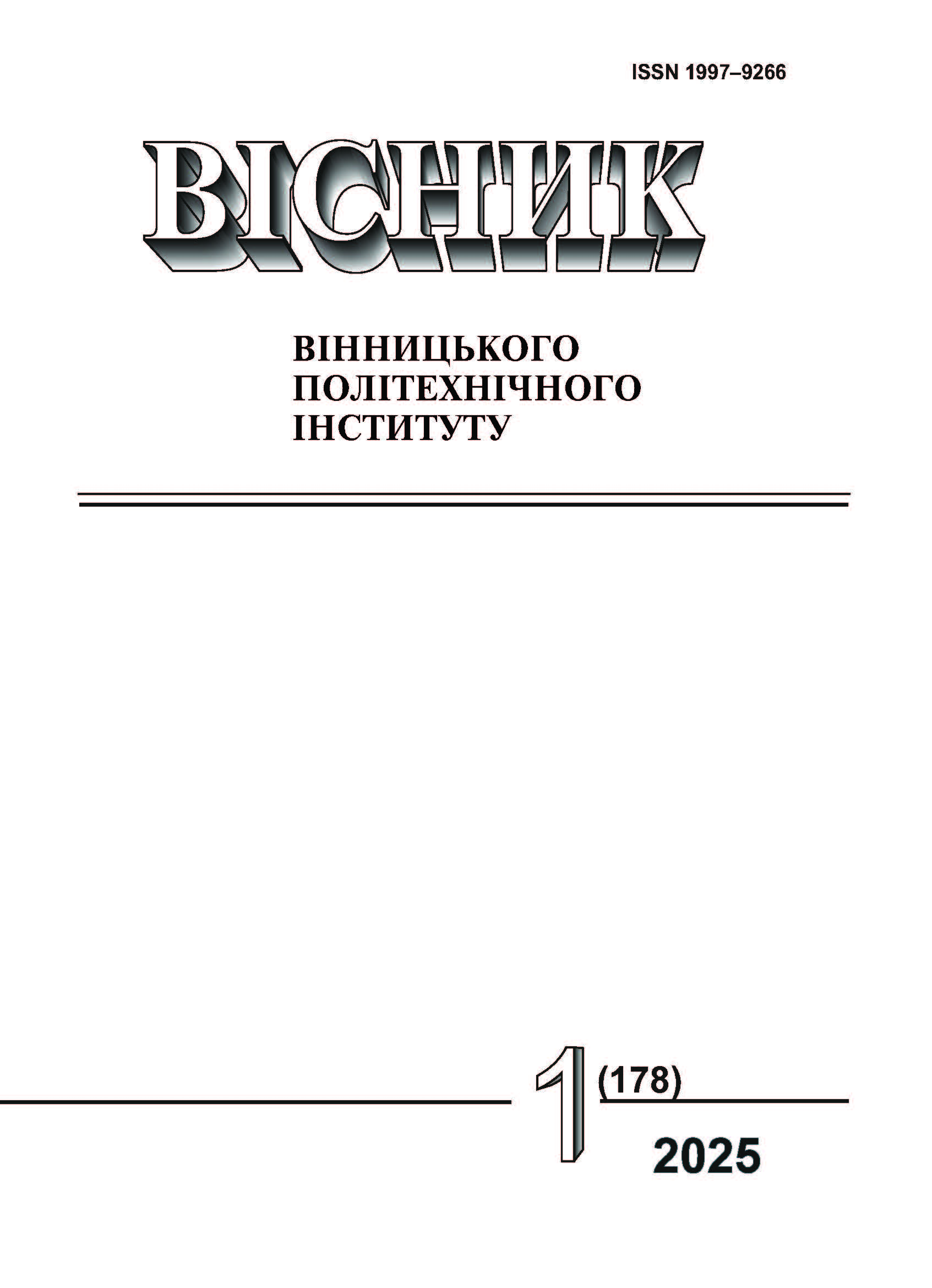Analysis of Localization Methods for Wireless Sensor Networks in Indoor IoT Environment
DOI:
https://doi.org/10.31649/1997-9266-2025-178-1-150-155Keywords:
localization methods, wireless sensor networks, Internet of Things (IoT), localization accuracy, energy efficiency, scalability, interference resistance, sensitivity, trilateration, ESPRIT, minimum Capon variance, RSSI, proximity-based positioning, weighted subspace fittingAbstract
Experimental studies and analysis of various localization methods for wireless sensor networks in the indoor environment of the Internet of Things (IoT) have been conducted. The aim of the work was to determine the effectiveness and limitations of the main localization approaches for their further application in different environments. The investigated methods included minimum Capon variance, ESPRIT algorithm, weighted subspace fitting, proximity-based positioning, and RSSI-based trilateration. The main focus was on analyzing the key characteristics of the methods, such as accuracy, energy efficiency, scalability, interference resistance, sensitivity to environmental parameters, and signal transmission range. The results showed that each of the considered methods has its own unique advantages and limitations depending on the specifics of the application. The ESPRIT algorithm, for example, provided the highest positioning accuracy and scalability, making it suitable for large and complex networks with high node density. Proximity-based positioning methods were found to be the most energy-efficient, which is a crucial factor for IoT applications with tight power constraints. The RSSI-based trilateration method demonstrated high noise immunity and stability over a wide range of conditions, including signal density variability and the presence of physical barriers in the environment. The study enabled to formulate recommendations for choosing the optimal localization method depending on the specific requirements for accuracy, power consumption, network stability, and operating environment characteristics. The results obtained are of practical value for IoT system developers, as they contribute to optimizing network performance, increasing data transmission reliability, and reducing power consumption. The findings of this study can serve as a basis for future developments and improvements of localization algorithms, ensuring their effective use in a wide range of IoT applications, such as smart buildings, industrial monitoring, logistics, and healthcare. Keywords: localization methods, wireless sensor networks, Internet of Things, localization accuracy, energy efficiency, scalability, interference resistance, sensitivity, trilateration, ESPRIT, minimum Capon variance, RSSI, proximity-based positioning, weighted subspace fitting.
References
M. Sandeli, M. A. Bouanaka, and I. Kitouni, “An Efficient Localization Approach in Wireless Sensor Networks Using Chicken Swarm Optimization,” in 2021 International Conference on Information Systems and Advanced Technologies (ICISAT), Tebessa, Algeria, 2021, pp. 1-6, https://doi.org/10.1109/ICISAT54145.2021.9678446 .
S. Avareddy and R. V. Biradar, “Comparative Analysis of Localization Techniques and Security Mechanisms,” in WSN, 2021 IEEE International Conference on Mobile Networks and Wireless Communications (ICMNWC), Tumkur, Karnataka, India, 2021, pp. 1-4, https://doi.org/ 10.1109/ICMNWC52512.2021.9688549 .
S. Padhy, S. Dash, P. P. Malla, S. Routray, and Y. Qi, “An Energy Efficient Node Localization Algorithm for Wireless Sensor Network,” in 2021 IEEE 2nd International Conference on Applied Electromagnetics, Signal Processing, & Communication (AESPC), Bhubaneswar, India, 2021, pp. 1-5, https://doi.org/10.1109/AESPC52704.2021.9708459 .
P. Khobragade, P. Ghutke, V. P. Kalbande, and N. Purohit, “Advancement in Internet of Things (IoT) Based Solar Collector for Thermal Energy Storage System Devices: A Review,” in 2022 2nd International Conference on Power Electronics & IoT Applications in Renewable Energy and its Control (PARC), Mathura, India, 2022, pp. 1-5. https://doi.org/10.1109/PARC52418.2022.9726651 .
A. Lachouri, and A. Ardjouni, “Aeroelastic Stability of Combined Plunge-Pitch Mode Shapes in a Linear Compressor Cascade,” Advances in the Theory of Nonlinear Analysis and Its Applications, vol. 2, pp. 101-117, 2022.
A. Panwar, R. Morwal, and S. Kumar, “Fixed Points of ρ-Nonexpansive Mappings Using MP Iterative Process,” Advances in the Theory of Nonlinear Analysis and Its Applications, vol. 2, pp. 229-245, 2022.
S. Bhattacharya, and M. Pandey, “Deploying an Energy Efficient, Secure & High-Speed Sidechain-Based TinyML Model for Soil Quality Monitoring and Management in Agriculture,” Expert Systems with Applications, vol. 242, pp. 122735, 2024. https://doi.org/10.1016/j.eswa.2023.12273 5 .
S. Shivadekar, B. Kataria, S. Limkar, K. S. Wagh, S. Lavate, and R. A. Mulla, “Design of an Efficient Multimodal Engine for Preemption and Post-Treatment Recommendations for Skin Diseases via a Deep Learning-Based Hybrid Bioinspired Process,” Soft Computing, pp. 1-19, 2023.
H. Boutebba, H. Lakhal, K. Slimani, and T. Belhadi, “The Nontrivial Solutions for Nonlinear Fractional Schrödinger-Poisson System Involving New Fractional Operator,” Advances in the Theory of Nonlinear Analysis and Its Applications, vol. 2, pp. 121-132, 2023.
Downloads
-
pdf (Українська)
Downloads: 117
Published
How to Cite
Issue
Section
License

This work is licensed under a Creative Commons Attribution 4.0 International License.
Authors who publish with this journal agree to the following terms:
- Authors retain copyright and grant the journal right of first publication.
- Authors are able to enter into separate, additional contractual arrangements for the non-exclusive distribution of the journal's published version of the work (e.g., post it to an institutional repository or publish it in a book), with an acknowledgment of its initial publication in this journal.
- Authors are permitted and encouraged to post their work online (e.g., in institutional repositories or on their website) prior to and during the submission process, as it can lead to productive exchanges, as well as earlier and greater citation of published work (See The Effect of Open Access).





